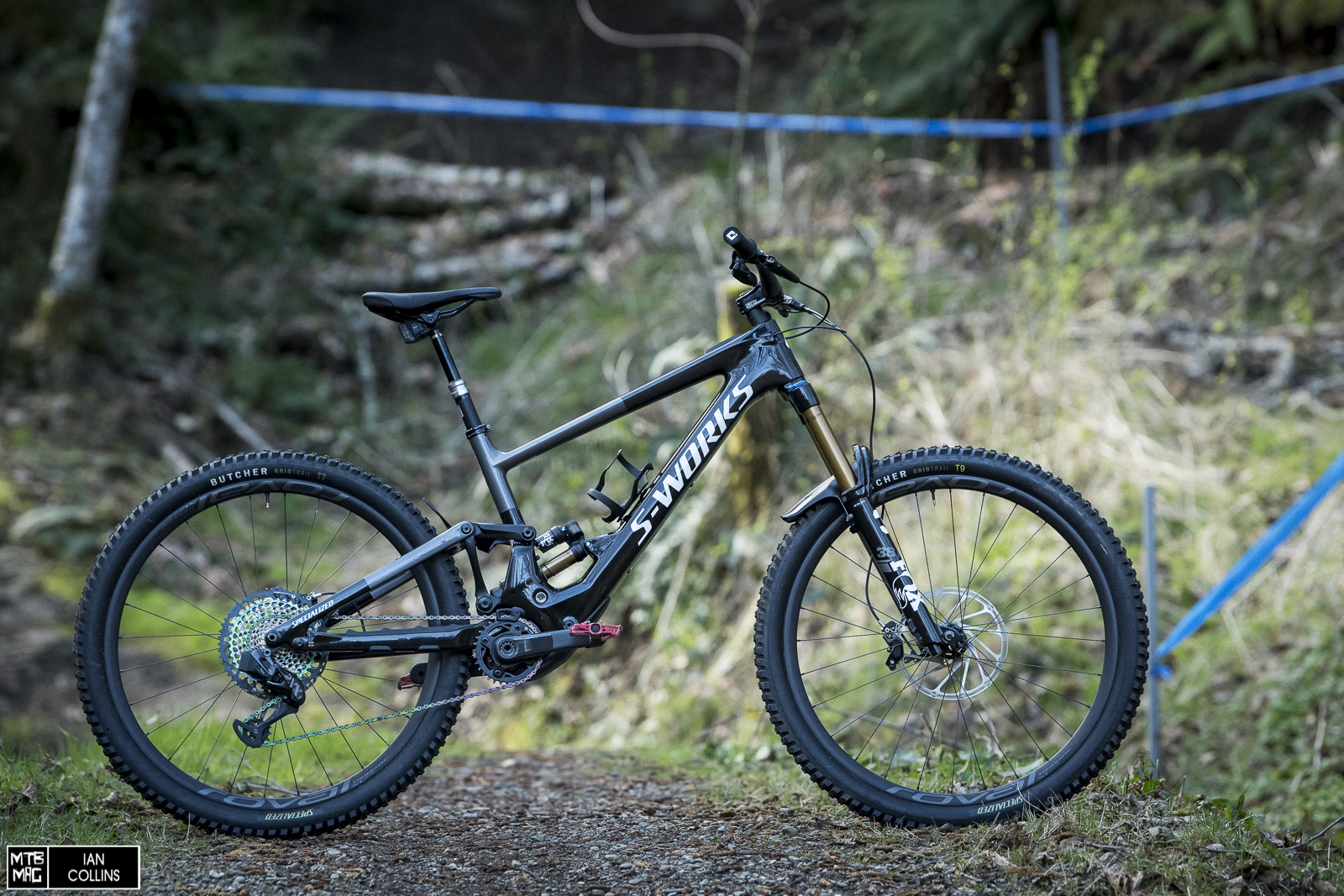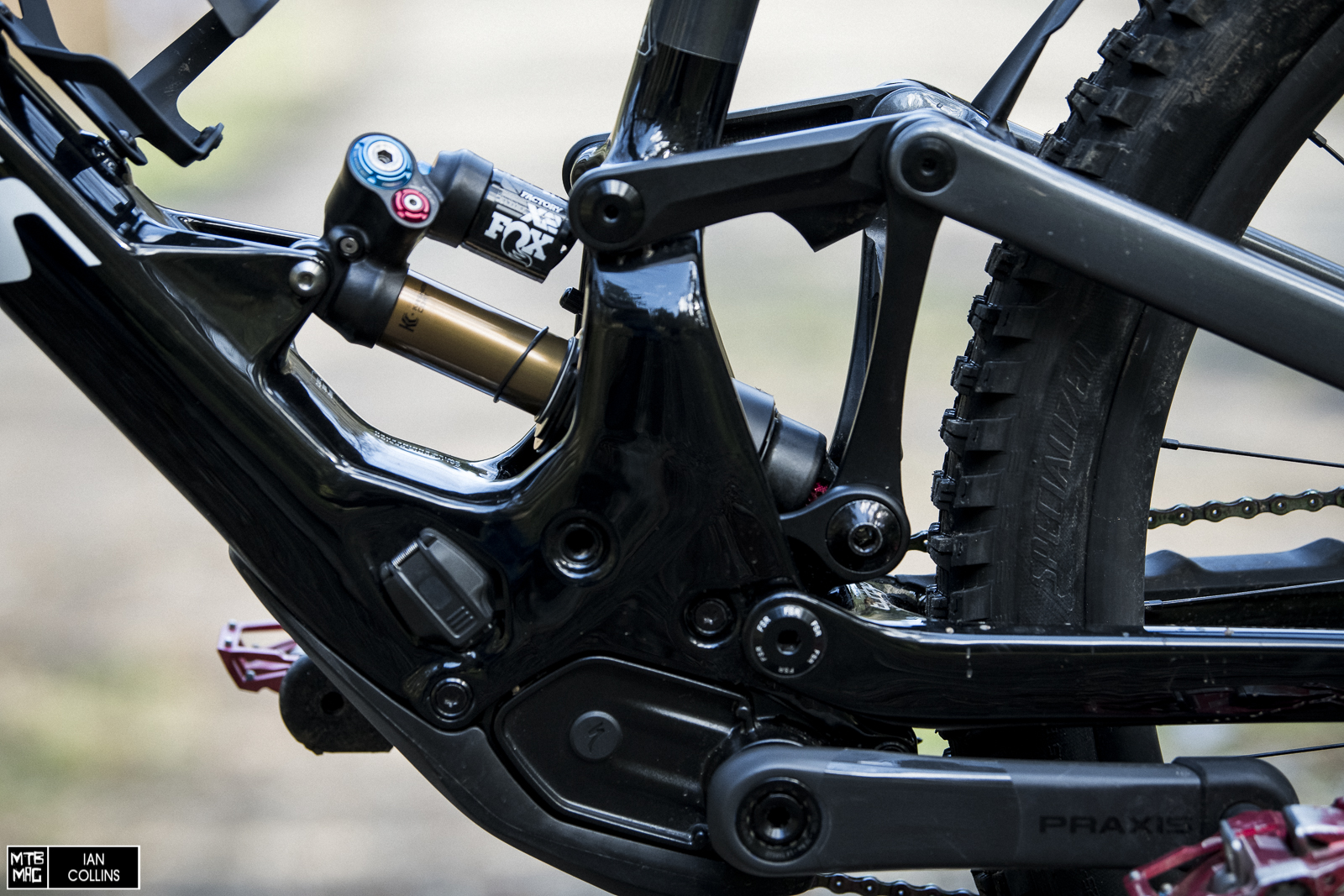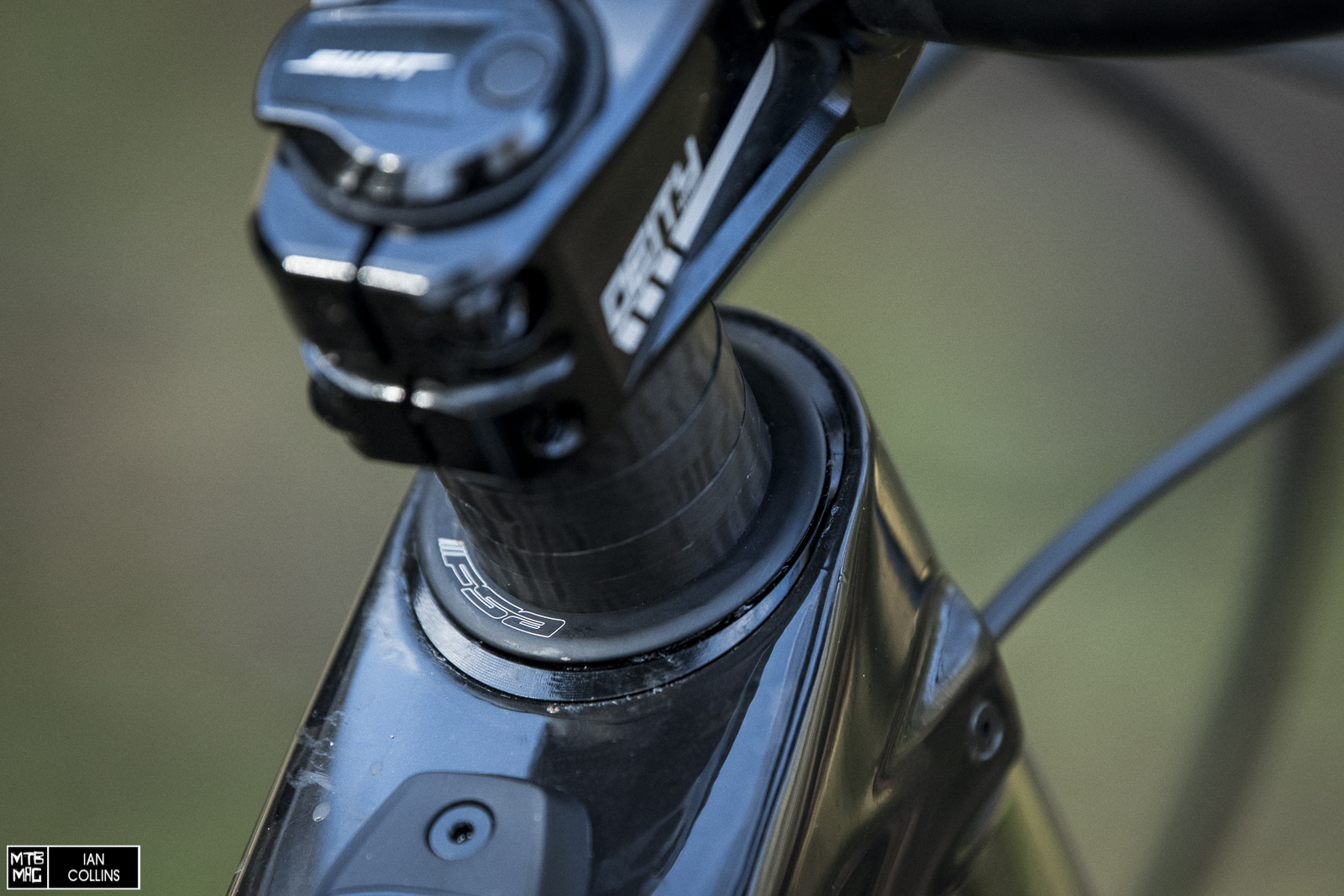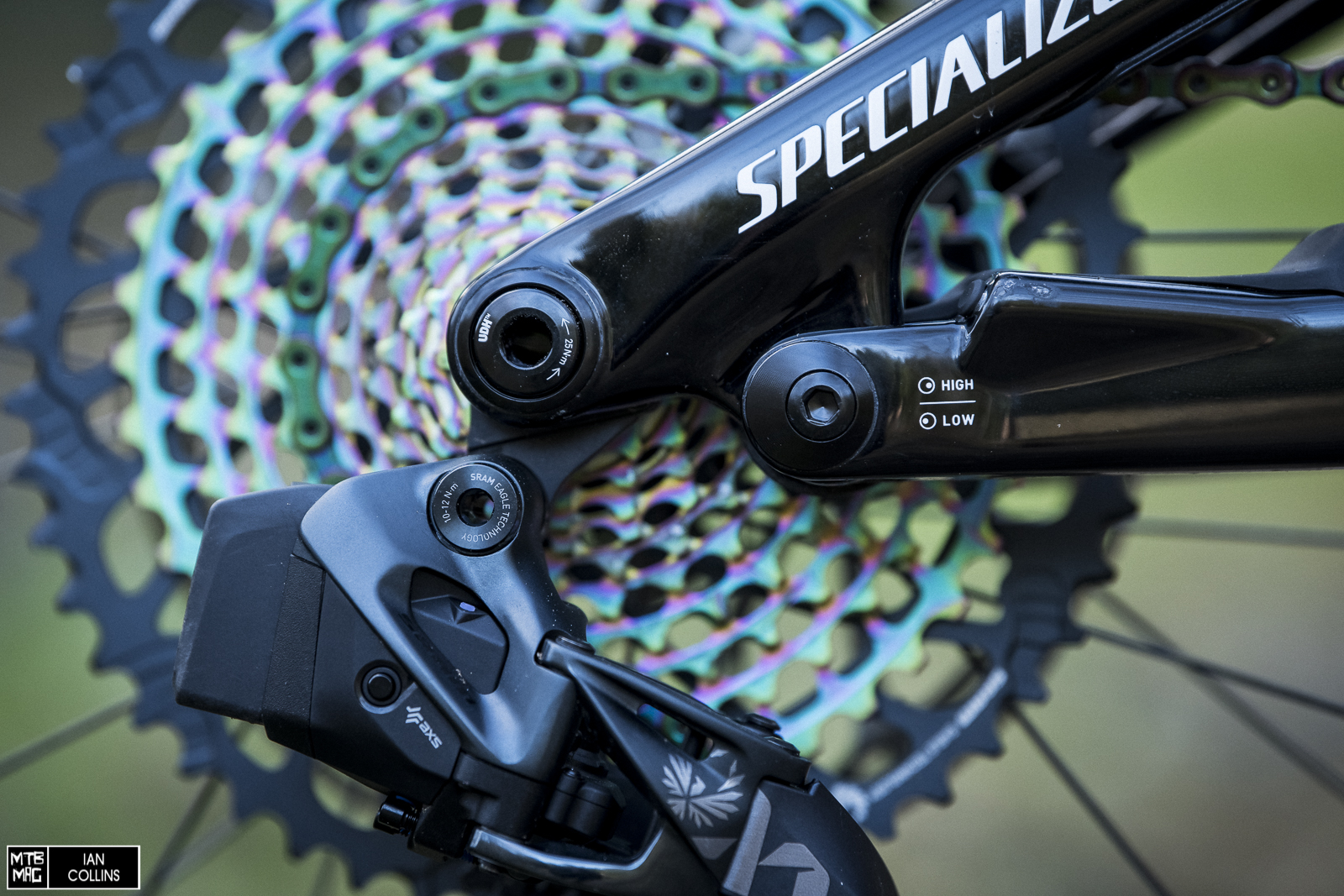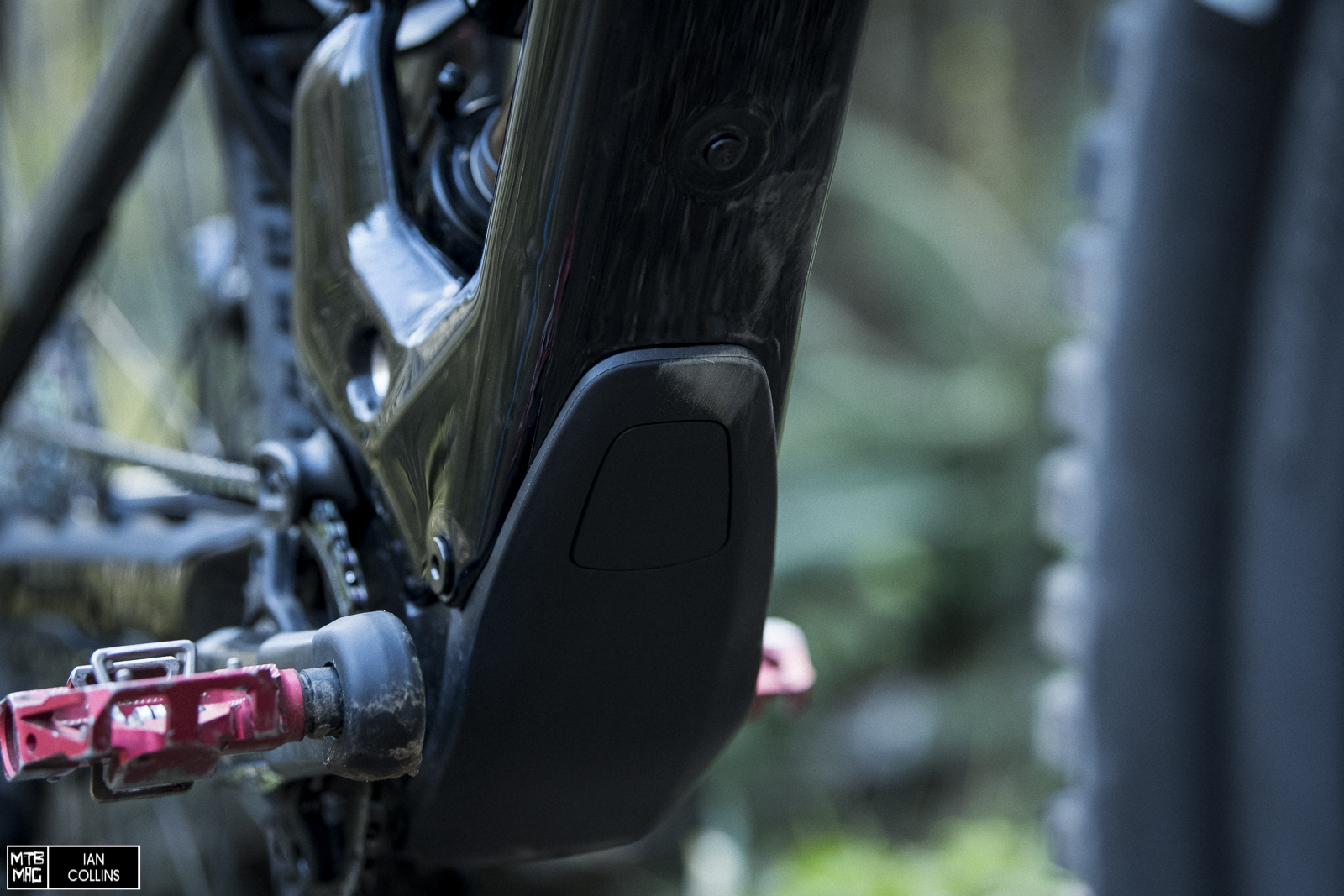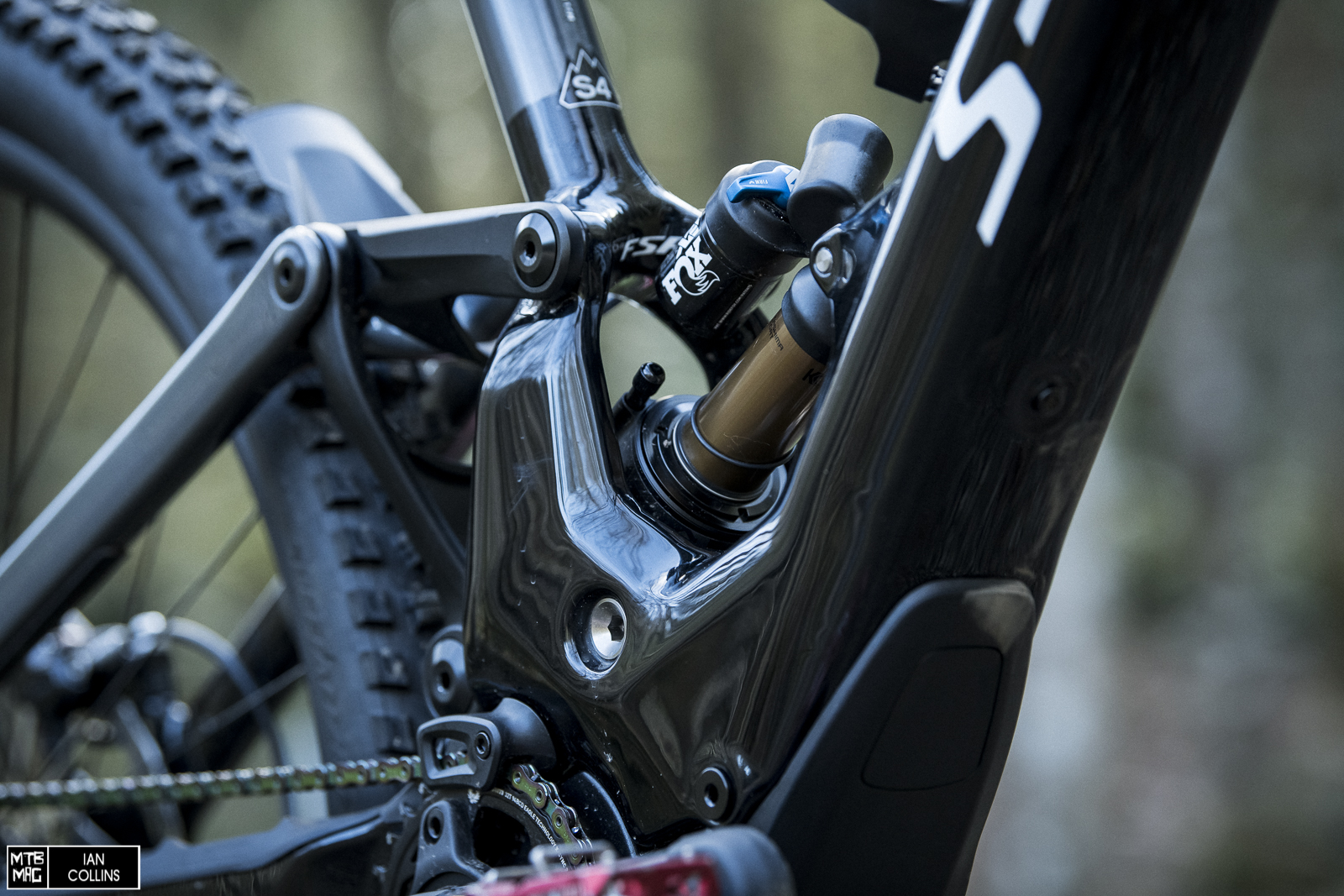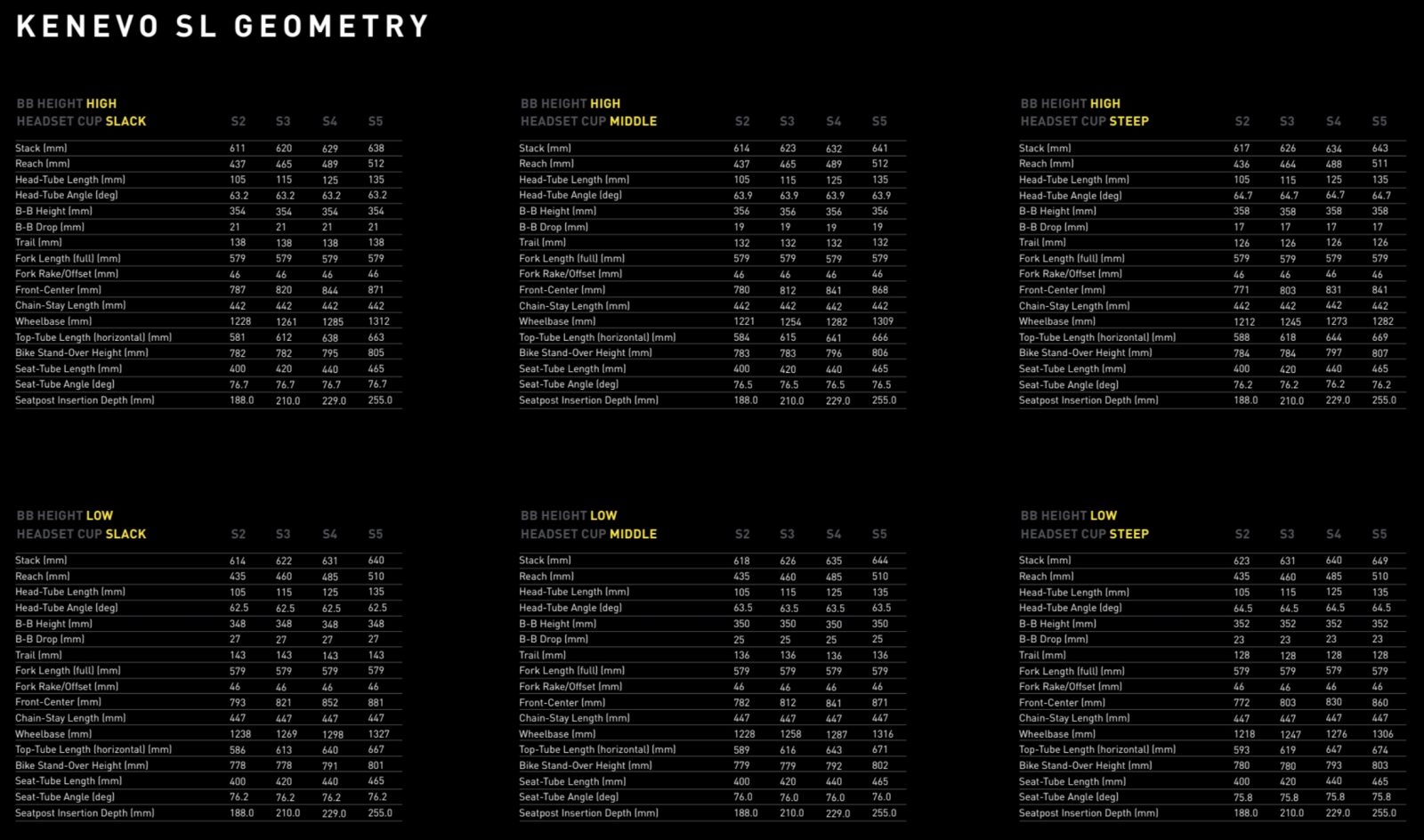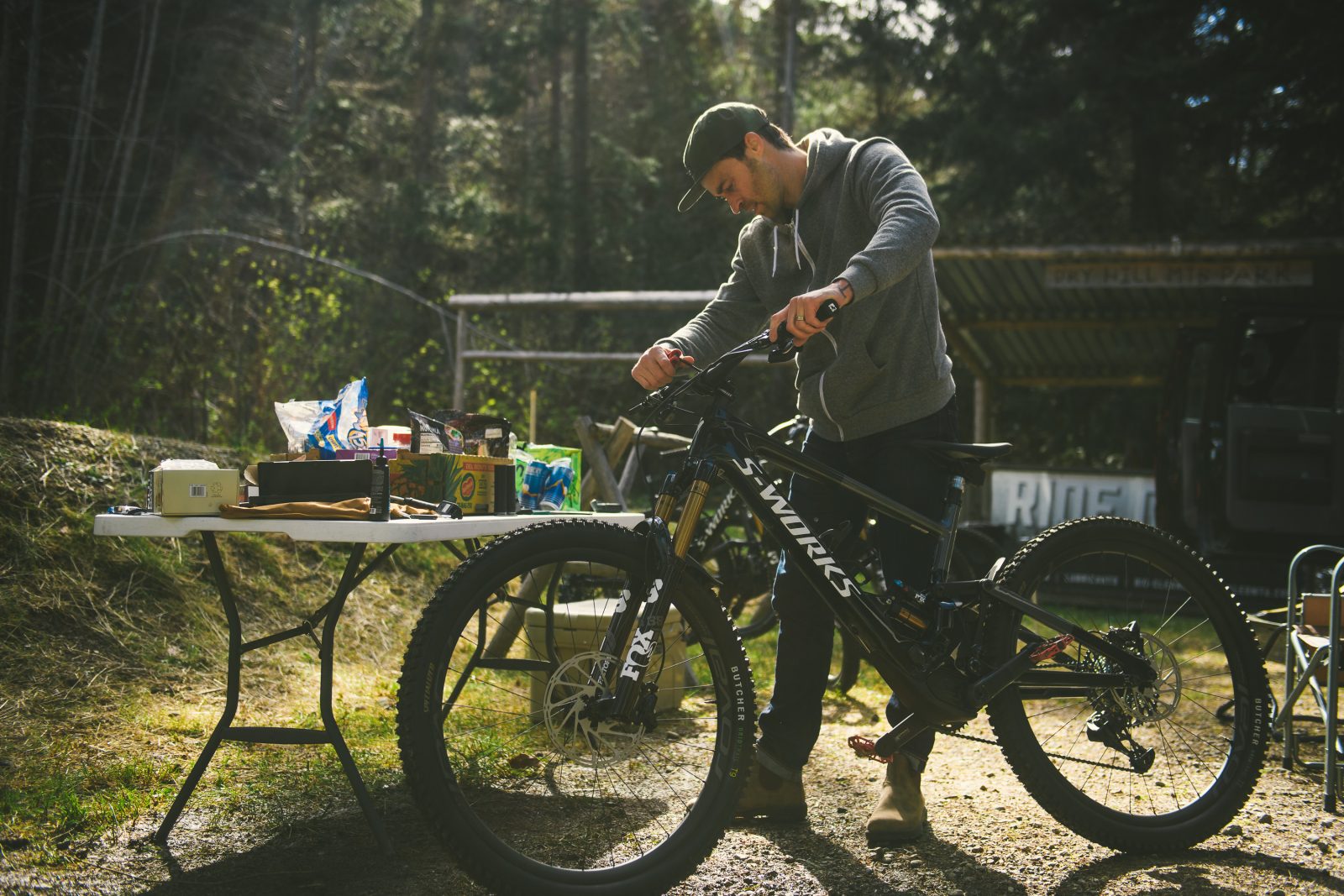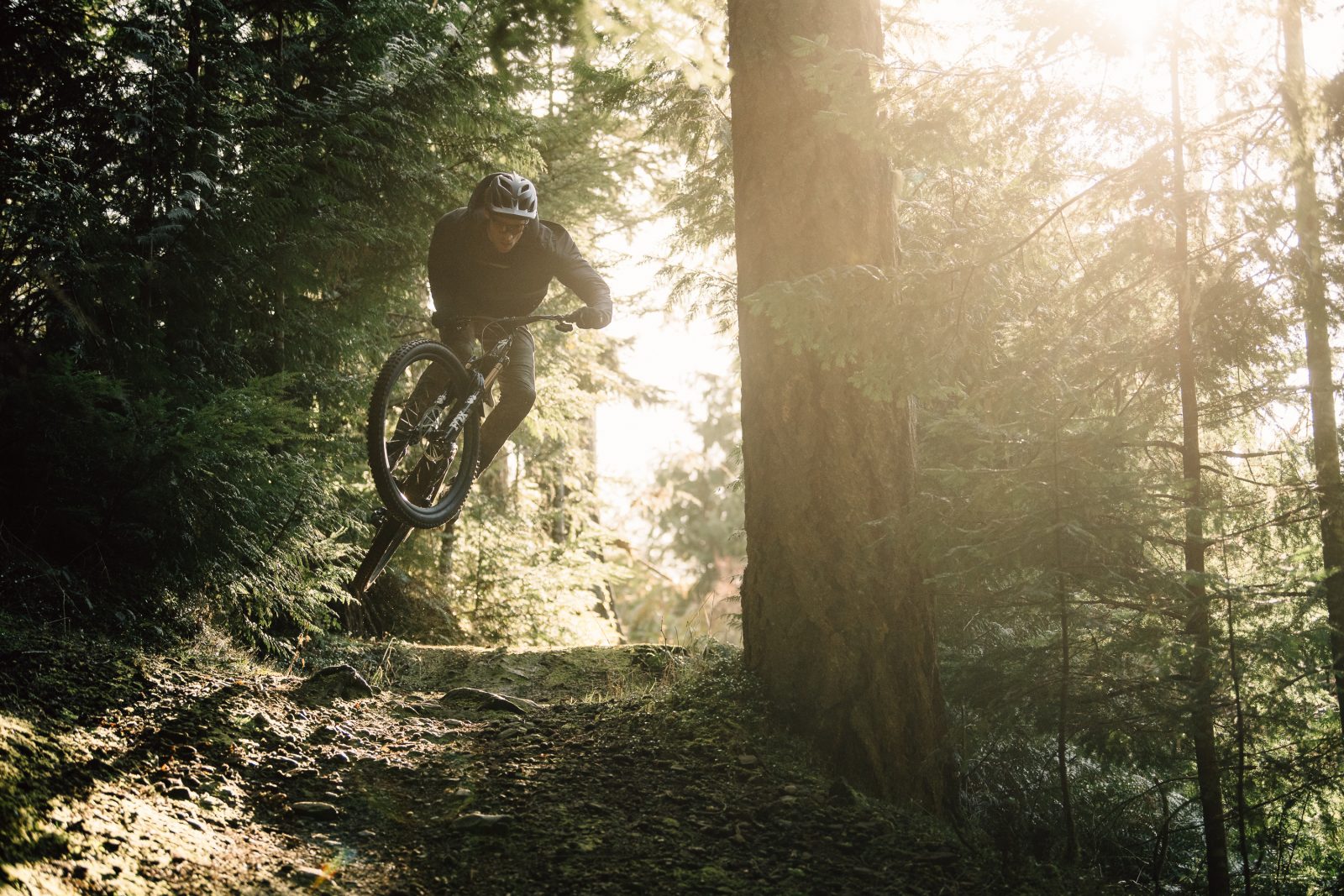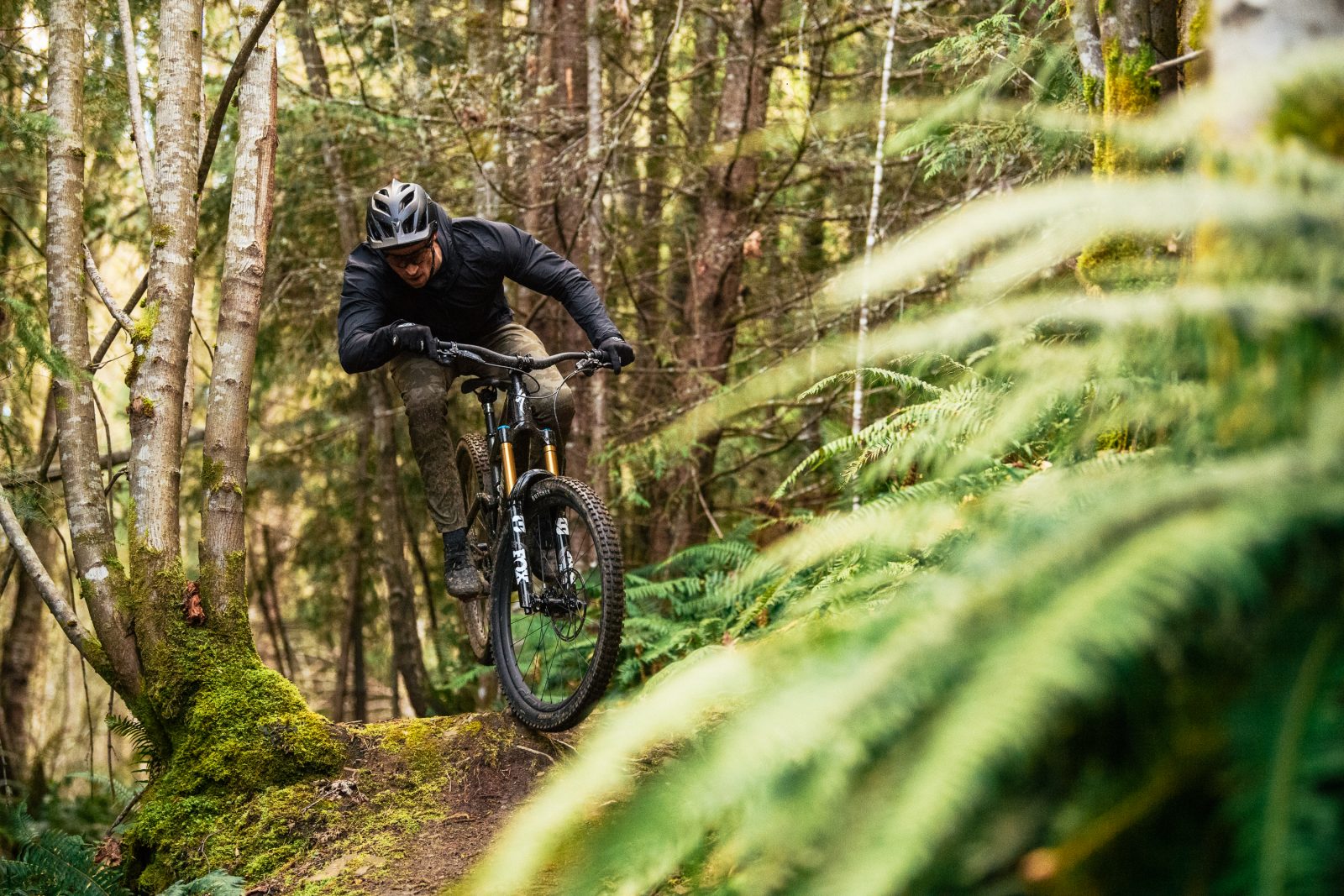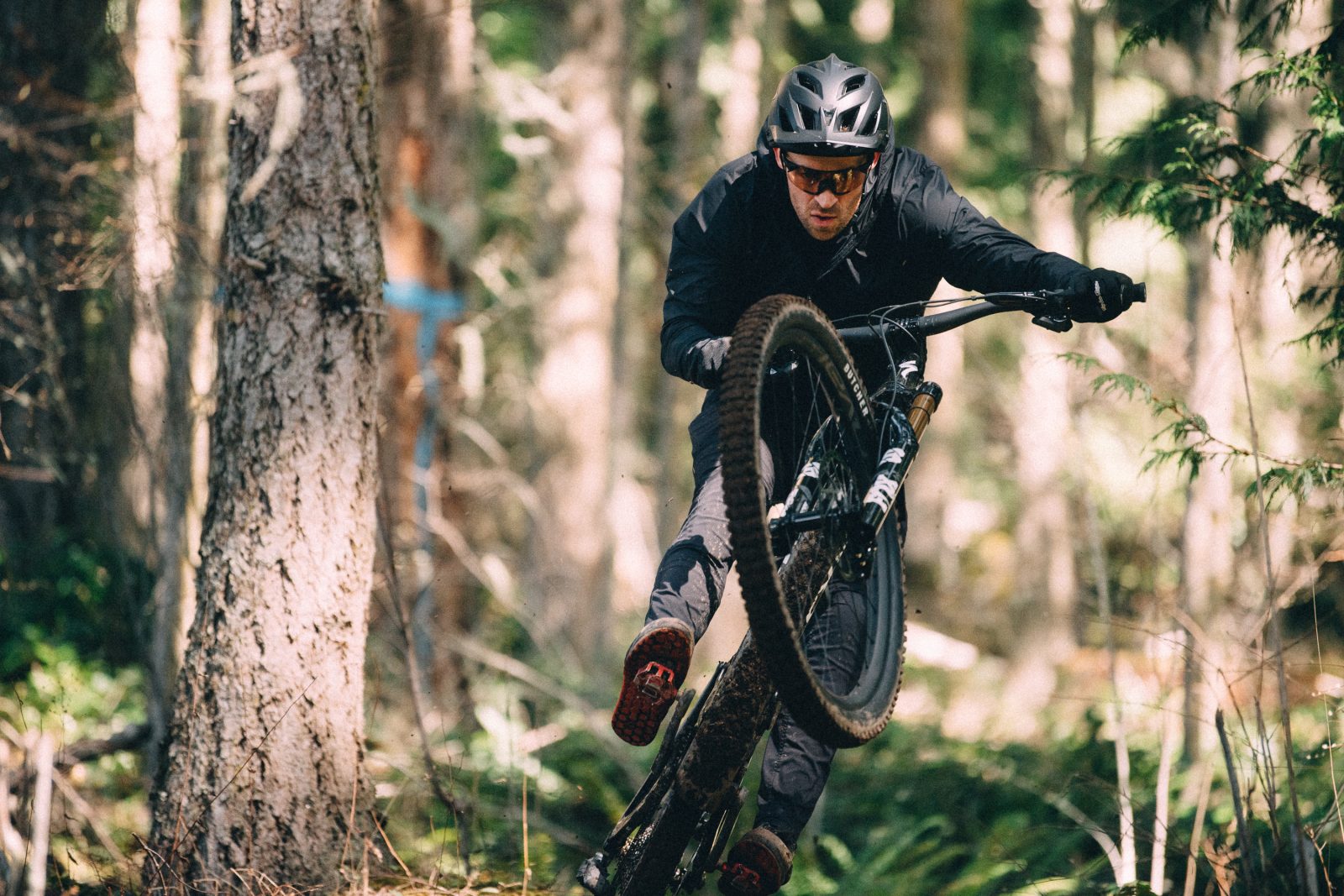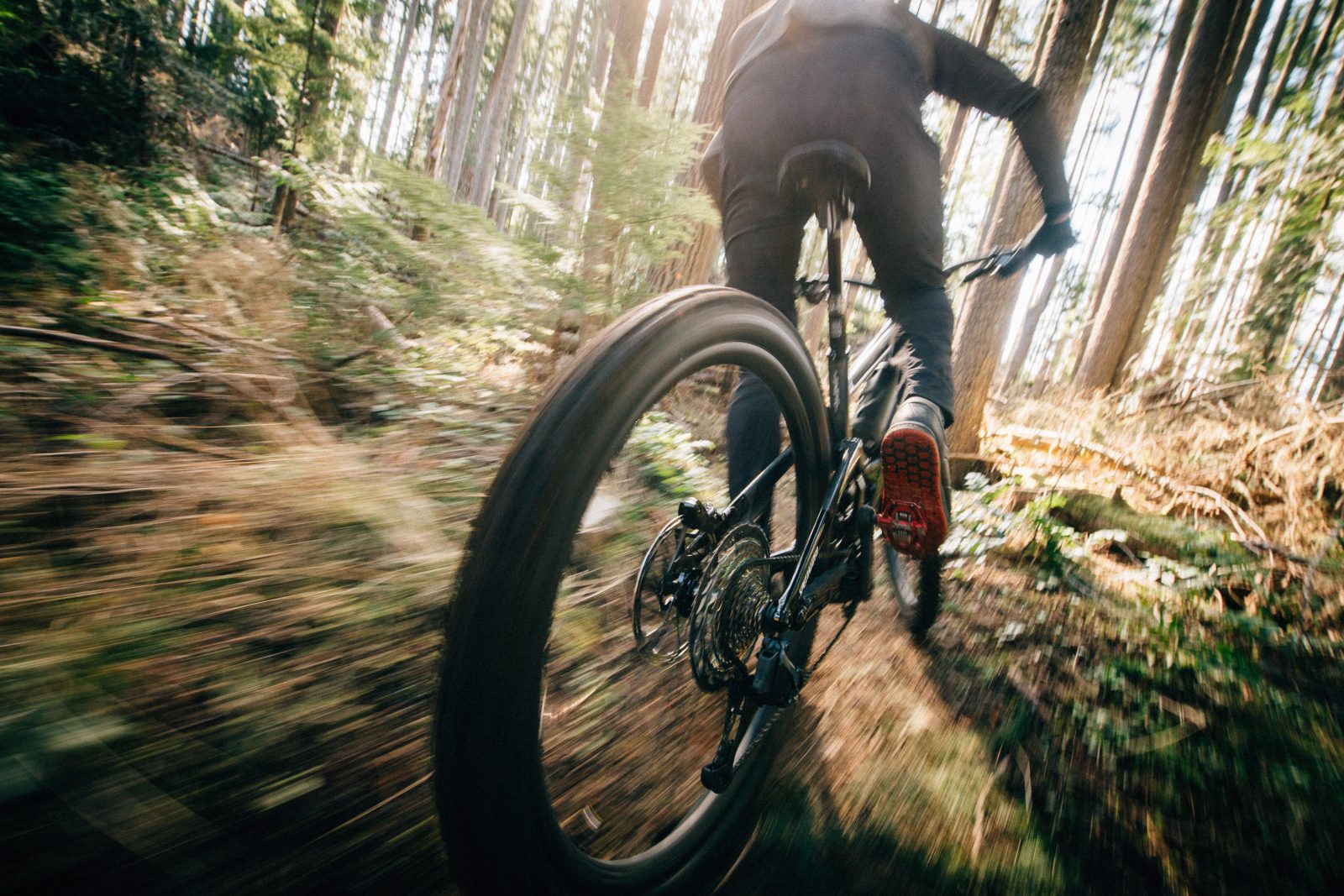[First Ride] Specialized Turbo Kenevo SL S-Works
A few weeks ago I was invited to an incredible riding riding location to test a very interesting new bike. The new-to-me place was Port Angeles, home of the legendary “Underworld Cup” – a U.S. National race that happened each year around Sea Otter time and, due to its timing, attracted top World Cup talent. The bike is the all new Specialized Turbo Kenevo Super Light. Upon a quick glance it could almost pass for an Enduro – for good reason, as you can see. Building upon the Enduro’s new suspension framework, the wizards at Specialized managed to fit the bike with their 240Wh pedal assist system that was debuted with the Levo SL. The bike tips the scales at just 40 pounds and boasts 170mm of travel front and rear, rolling on 29″ wheels. Interestingly, it also takes on a couple of the Stumpjumper EVO‘s brilliant new updates – namely the adjustable headset and flip chip now located in the Horst link. Anyhow, read on for a full breakdown…
Details
- 170mm travel front and rear
- 29″ wheel only
- Adjustable geometry and head angle
- 240 watts power
- 320Wh internal battery
- 35Nm torque
- ~2 hours 35 minute charge time
- Up to 4.5 hours ride time
- Range extender 160Wh battery offers up to 7 hours ride time
- S-sizing: S2, S3, S4(tested), S5
- Boost hub spacing
- Metric shock sizing
- SRAM Universal Derailleur Hanger
- $15,000 as tested
- 40lbs – our scale, S4 – no pedals/tubeless
Starting with suspension, the Kenevo SL adopts the 6-bar system that’s seen on the new Enduro. While the travel is the same, the suspension is a little different. It has a slightly more linear rate – although it is still quite progressive by most standards. Fox’s excellent Float X2 is spec’d as standard with a custom tune.
No surprise to see a Fox 38 Factory up at the front of a bike this burly. 170mm travel and four way adjustable damping make it a formidable option. Unlike with Levo SL, Specialized made the wise spec decision to not try to save weight on the brakes and opted for SRAM Code RSCs with a 220mm front and 200mm rear rotor, which deliver more than enough power, even on the steepest terrain.
Above is one of the Stumpjumper EVO’s highlights that has been coopted by the Kenevo SL: an adjustable headset. You can choose between neutral, which is shown above, or +/-1º option. The swap only requires removing the stem and top cap – not the entire fork. Then the upper headset cup comes out, or can be turned around, by hand. Pretty nifty.
Another Stumpy EVO pick up is that the flip chip for geometry adjustment is now in the Horst pivot, as opposed to the lower shock mount. It’s a little easier to operate and it also means the shock doesn’t need any special hardware. The adjustment gives you 6mm of BB height adjustment and a half degree of head/seat tube angle adjustment.
The lower downtube protector is quite large. It can be removed by hand and there is actually a decent sized storage port with enough room to stuff a tube in there. Call it an unofficial SWAT box.
Specialized pioneered raised bumps which reduce chain slap noise, so it should be no surprise to see them on this bike. The protection throughout is quite ample in general.
Having the sleek display integrated right into the top tube is really nice and it’s seamlessness that we’ve just come to expect these days from Specialized. Most of the key information is available here, but for more detailed control over your ride you can go into the the Specialized Mission Control app to fine tune various settings. There is a simple Plus/Minus button on a minimalist collar by the grip (shown above, right) which also has a walk mode button.
A 12-speed 10-52T SRAM Eagle AXS delivers flawless shifting while carbon fiber Praxis cranks keep things rolling and save a bit of weight. The Roval Traverse carbon wheels are lightweight and quite tough. They’re wrapped in Butcher tires in the T9/T7 combo. Personally I’d swap to a softer T9 in the rear rear, but in the interest of durability, I can see why Specialized opted for the T7.
Kenevo’s gorgeous frame is finished off with titanium bolts in a few key places to help get the weight down to its surprisingly reasonable 40 pound mark.
Geometry
On the trail
After a quick setup I was on the bike, feeling very comfortable in pretty short order and rallying down some of the best trails I’ve ever ridden in my life. Since I am used to slightly shorter reach numbers it took some initial adjustment, but I appreciated the rather long 489mm reach and the stability that came along with it. Most of the other numbers – such as rear center and head angle – were all well familiar from the more aggressive bikes I ride day to day. One aspect that glaringly separated the Kenevo SL from every other bike I’ve ridden was just how quiet it is. Putting motor noise aside, it’s possibly the most silent bike I’ve tested to date – which was a dream come true. There is simply no chain slap, no clunking and no rattling whatsoever. The motor noise itself is slightly whiny, but not bad and more subdued than the average full power e-bike.
As far as the componentry is concerned, we’re talking about a flagship bike with some of the absolute best products money can buy. SRAM’s AXS drivetrain and Code brakes with oversized rotors leave nothing to complain about whatsoever. FOX’s 2021 suspension is as good as it gets, and Specialized have done a great job with everything from the carbon fiber Roval wheels to the tires and even down to the Deity cockpit. So for most of this article, I’ll be discussing the ride quality as it pertains to the frame, suspension, motor and geometry, rather than nit picking over the spec…
Suspension wise, I set things up roughly along the same lines as I did with the Enduro I tested a while back. The Kenevo SL features the same 170mm of front and rear travel, but the rear shock gets a bump in its stroke, which helps lower its leverage ratio (a good thing). Specialized have also slightly flattened out the progression a hair to better work with the much improved 2021 Fox Float X2 – a shock that has increased support and a more robust bottom out bumper compared to its 2020 predecessor. Personally, I found the suspension to be one of the best I’ve ridden both from a kinematics aspect as well as in terms of the tuning/damper side of things. While this bike – like the Enduro – would still be a great candidate for a coil shock, I never found myself contemplating one – even in the most haggard of trail conditions. The suspension is simply divine – it tracks and carries speed like nothing I’ve ever ridden. One aspect that leads to increased stability, and thus confidence, is the added weight of the motor and battery. On battered terrain and high speed sections alike, a 40 pound bike will be more surefooted than a 32 pound bike, no doubt – even if it may not be as nimble at lower speeds.
On the whole I found the geometry to be pretty spot on relative to where the bike lands duty wise, given its travel. The reach and rear center are just right in both their high and low positions. With that in mind, this is a big bike and it takes a fair amount of speed and input for it to really “come alive”. It’s not a lively little play toy at low speeds – but it does carve like a knife once up to speed under an aggressive command. The stability is second to none – it has downhill bike level tracking and that is not an overstatement. Anyhow, I always sing high praise for bikes with loads of adjustability and this is no exception. Having a high/steep and a low/slack position independent of its additional 3 total headset adjustments leaves room for loads of options. However, I think that the bottom bracket is a hair on the low side, even in the high position. Given the nature of e-bikes, where you can use the motor’s power to blast up rough technical climbs a little bit of extra clearance isn’t a bad thing. I didn’t find it to be a huge setback, but I just don’t think that I would even use the low position at all. Perhaps if both positions were a few millimeters higher, then more riders would find themselves being able to take advantage of the two different positions more frequently…
As far as the motor is concerned, this is what you could call a mid-duty e-bike. It’s not a high power bike with a massive battery and loads of torque. Rather, it gives you a bit of a boost on your rides, but it won’t fully transform the way that you ride to the same extent that a full powered e-bike would. For the sake of reference, turbo mode on this bike is roughly on par with the eco mode on my full power Trek Rail. I really like the “microtune” option, which allows you to toggle between 10% power increments, as opposed to three pre-set eco/trail/turbo modes. I now very much wish my personal e-bike had that feature. Microtune makes it a bit easier to slide into a group ride without constantly having to worry about how you’re pacing other riders on regular mountain bikes. The point being, it’s very easy to fine tune your output. With that in mind, the Mission Control app gives you great control over how much the Kenevo SL matches your output in its 3 different standard modes, should you prefer to not be finessing the controls throughout the ride and just pop into a single “set it and forget it” mode. A couple of very handy bits of data available on the display include elevation tracking and rider power output data.
While this article is by no means a full and comprehensive review, I have put in some pretty big days on the Kenevo SL – both at the press camp in Port Angeles and at home in Northern Idaho – which have helped me get a gauge for battery life. For the most part, unless I was going on a huge mission I chose to forgo the range extender battery and instead used that precious space in the bottle cage for water. You could always carry a hydration pack or stash a bottle in a SWAT bib if you do opt for the range extender. Anyhow, with that in mind, those who are destined for some big days in the saddle would be likely very happy to have it. You could basically set out for a 5-8 hour day of riding tackling just about any sort of terrain that comes your way.
Pricing
Kenevo SL Frameset: $8,500 USD
Kenevo SL Expert: $11,000 USD
Kenevo SL S-Works: $15,000 USD
Overall
If you haven’t picked up on it yet, I think this is a profoundly impressive bike in just about every conceivable way, but the burning question is who is this bike for? The Kenevo SL boldly lands in a unique place in the market because, paradoxically, it falls on the lower end of the power spectrum and on the highest possible end of the duty and capability spectrum. Personally I would see this as being more of a replacement to a traditional bike, as opposed to a supplement to one. It’s a monster of a bike, so it will give you a huge advantage on nastier, more challenging terrain and the boost in power will naturally help you get through very long days in the saddle. What I’m speaking to is the natural limitations of how hard you can push on a fully human powered 170mm travel front and rear 29″ bike.
The addition of a motor means you can lap out on the burliest terrain on the right bike without tiring nearly as easily or as early – read: more descent time. That is what makes this bike truly in a category of its own. With all of that in mind, the one thing to contend with is the price – at $15,000 the flagship S-Works that I tested is – to put it lightly – a tough pill to swallow. The Expert level build is still comprised of a great spec at a more manageable price, but it isn’t exactly affordable either. However, one thing is certain, Specialized deserves the tip of the hat for pushing the envelope with bold category experimentation as efforts like this trickle down and eventually make the mountain bike experience for all users at all price points more enjoyable, be it powered or not.
Action photos: Paris Gore
The post [First Ride] Specialized Turbo Kenevo SL S-Works appeared first on MTB-MAG.COM.

